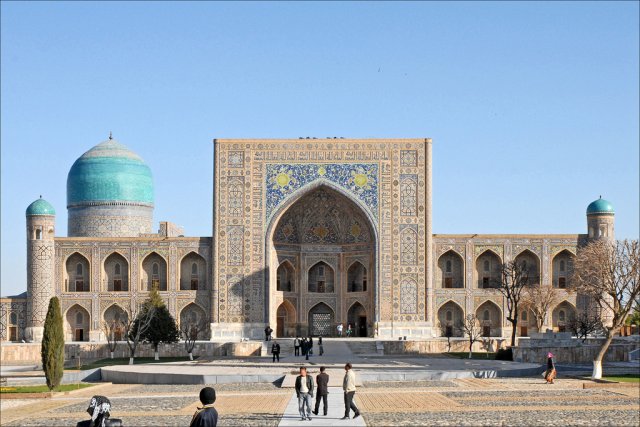"The city of Famous Shadows – witness of the change of epochs and outstanding rulers emerging from periods of decline and flourishing of the many times ancient and eternally young. His poets sang his glory, the architects worked minarets, palaces and mausoleums, it is full of mysticism and the breath of ages settles on the ancient walls.
History
The town of about three thousand years, and disputes over his age not subside until now. Some Arabic sources have from 3700 to 4700 years. But who can know reliably? He was known under different names. In the Avesta (the Holy book of Zoroastrianism), he is mentioned as the capital of the state Sogdiana. During the campaign of Alexander the great (in 329 BC) was described under the name of Makaranda.
At the end of the first Millennium ad Samarkand was the capital of the Samanids, and from 1370 – the jewel of Tamerlane's Empire. During Ulugh beg's reign, the city became the center of world science in the East. Then was going through a period of decline – the capital was moved to Bukhara and he became just a province (Duchy). With the advent of the Soviet Union became part of the Uzbek SSR, although historically belonged to the Tajiks.
Attractions
The undisputed symbol of Samarkand is Registan square. Three majestic madrasahs facing portals to the center of the space. The first school was built on the orders of Khan Ulugh beg in 1420. Here taught mathematics, astronomy, philosophy and theology. The structure is richly decorated with glazed bricks of various ornaments decorate the yellowish walls. Madrasah Sher-Dor was conceived as a mirror reflection of Ulugbek madrasah was erected in front of it two centuries later.
Its portal is decorated with two tigers carrying the sun on their backs, looking for the white deer. This figure is a national symbol of Uzbekistan. The culmination of the architectural ensemble became the third madrasah – Tillya-Kari ("covered with gold"). The structure does not copy the previous two, they are smaller in size and has the rich decor in gold colors.
Mosque Bibi Khanum – the monumental structure at that time. Blue dome of her "like heaven, a portal – the milky way." According to legend, built by order of Timur's wife Bibi Khanum. She conceived the structure as a gift to her husband in the campaign. But the architect, to erect the building, fell in love with the Queen and demanded a kiss for the completion of work by the arrival of Timur. The end of the legend varies – some say that the architect threw himself down from the minaret of his creation, in order to avoid penalty.
But other sources claim that the king demanded the wizard to build underground rich mausoleum and after killed him. And the dungeon became to keep the library and also moved the Treasury. The library was expanded and a descendant of Tamerlane – Ulugbek, and she was reputed to be the largest collection of books in the world. And then the dungeon was lost forever. But that's another story.
Noteworthy are also the Mausoleum of Gur Emir, the tomb of Khodja Daniyar (the biblical prophet Daniel), the ancient city of Afrosiab, the many museums – just not listed.
And it makes no sense to paint beauty need to see to feel the atmosphere of ancient times, where every brick is the witness of history and it is only a moment in comparison with it.
